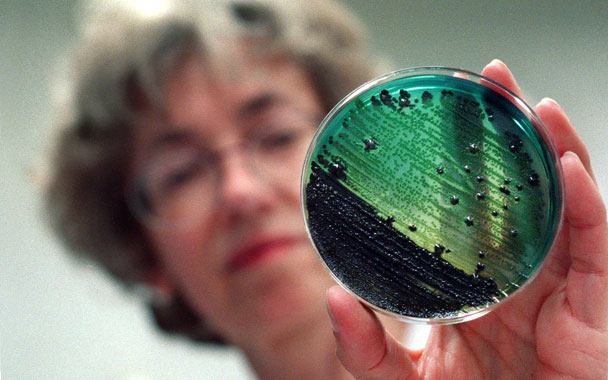It’s a Mystery
It was way back in April when diners were first sickened by salmonella Saintpaul, but the Food and Drug Administration (FDA) has yet to find the culprit. In the best Agatha Christie tradition, the early suspects, fresh tomatoes, are beginning to look innocent as suspicion shifts to jalapeños and perhaps cilantro. Meanwhile, the culprit continues its rampage, chalking up more than 1,100 victims.
Which raised a secondary mystery: With months of time and millions of dollars at their disposal, why have the FDA sleuths been so ineffectual?
This week, Wenonah Hauter of Food and Water Watch, a consumer rights organization, solved the second mystery. It appears that one reason FDA investigators are doing such a poor job of solving the salmonella problem is that they are far too busy flying to Washington, D. C., to attend ceremonies during which they hand out awards to themselves.
That’s right. According to figures that Food and Water Watch obtained through the Freedom of Information Act, during the past eight years the notoriously cash-strapped agency has spent at least $2.2 million on award ceremonies, with about $800,000 of that going to folks in the Office of Regulatory Affairs—the ones who can’t find the source of the salmonella.
And it wasn’t all just plaques, certificates, and heartfelt applause. In addition to that $2.2 million, the agency doled out $35 million in cold hard cash bonuses in 2007. As Hauter reminds us, 2007 was one of the worst years on record for lapses in our food safety system.
Until 2008 came along.
They Giveth with One Hand…
First a kudo. With meat recalls again making headlines, late last week the USDA finally did what it should have done years ago: agreed to make public the names of retailers that sell recalled meat.
Under the earlier policy, the agency disclosed the names of slaughterhouses that processed contaminated meat, but refused to tell consumers where it was sold. (To see how useful this is, the next time you pick up a pack of fresh hamburger at a grocery store, scour the package and see if you can find out what company slaughtered the cattle that went into it.) The new ruling is a good decision, but not a perfect one. It applies only to recalls that are rated as the most dangerous to public health. The identities of retailers that sell meat involved in less dangerous recalls (such as the notorious case of downer cows at Westland Hallmark earlier this year) will still be the USDA’s dirty little secret.
…And Taketh with the Other
Now, a brickbat.
The USDA continues to play fast and loose with the definition of “organic.” October was supposed to have been the deadline for “organic” chicken farmers to stop lacing their birds’ feed with inorganic synthetic methionine, an amino acid that is used as a dietary supplement. There are natural sources for the stuff, so the USDA should insist that organic poultry growers use those instead of the synthetic ones—just as organic farmers should use natural, rather than synthetic, sources of nitrogen as fertilizer. But this week, the National Organic Standards Board, which sets rules for organic production, backed down, pushing the deadline (which had already been extended from 2005) to 2010, despite the availability of natural methionine. The agency cited concerns that removing the synthetic additive would “disrupt” the organic poultry industry, once again showing that it puts corporate convenience above consumers’ right to know that “organic” really means organic.
Is it any surprise that the decision comes after a review by a task force headed by—brace yourself—Tyson Foods, the country’s second largest poultry producer? Interestingly, Tyson recently had its own run-in with the USDA and was forced to remove misleading labels on packages proclaiming that its chicken was “antibiotic free.”




 Pinterest
Pinterest


